The Rotation of the Sun
1-2 ESO (12-14 years old)
In this experience, discover what the Sun is made of and the mysteries behind its dark spots.
Materials that could add value if prepared before coming to ESAC:
-
Concepts of Latitude and Longitude. Negative values
-
Videos
Material to be used at ESAC: Scientific Case, Sun images
The Sun is our closest star, at only 150 million kilometres from the Earth. If we compare the Sun with other stars in our Galaxy, the Sun is a standard dwarf star. However, it is 109 times bigger than the Earth!
Just like other stars, the Sun rotates.
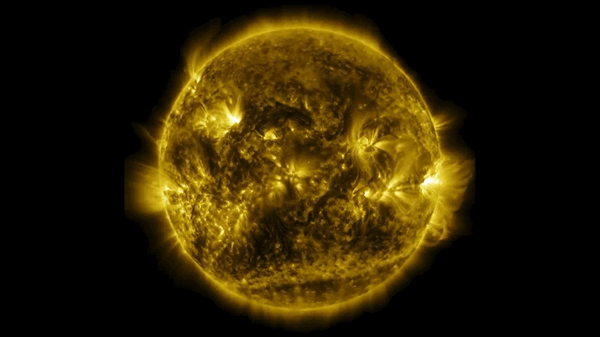
Animation of the Sun rotating showing flares and prominences. Credit: NASA
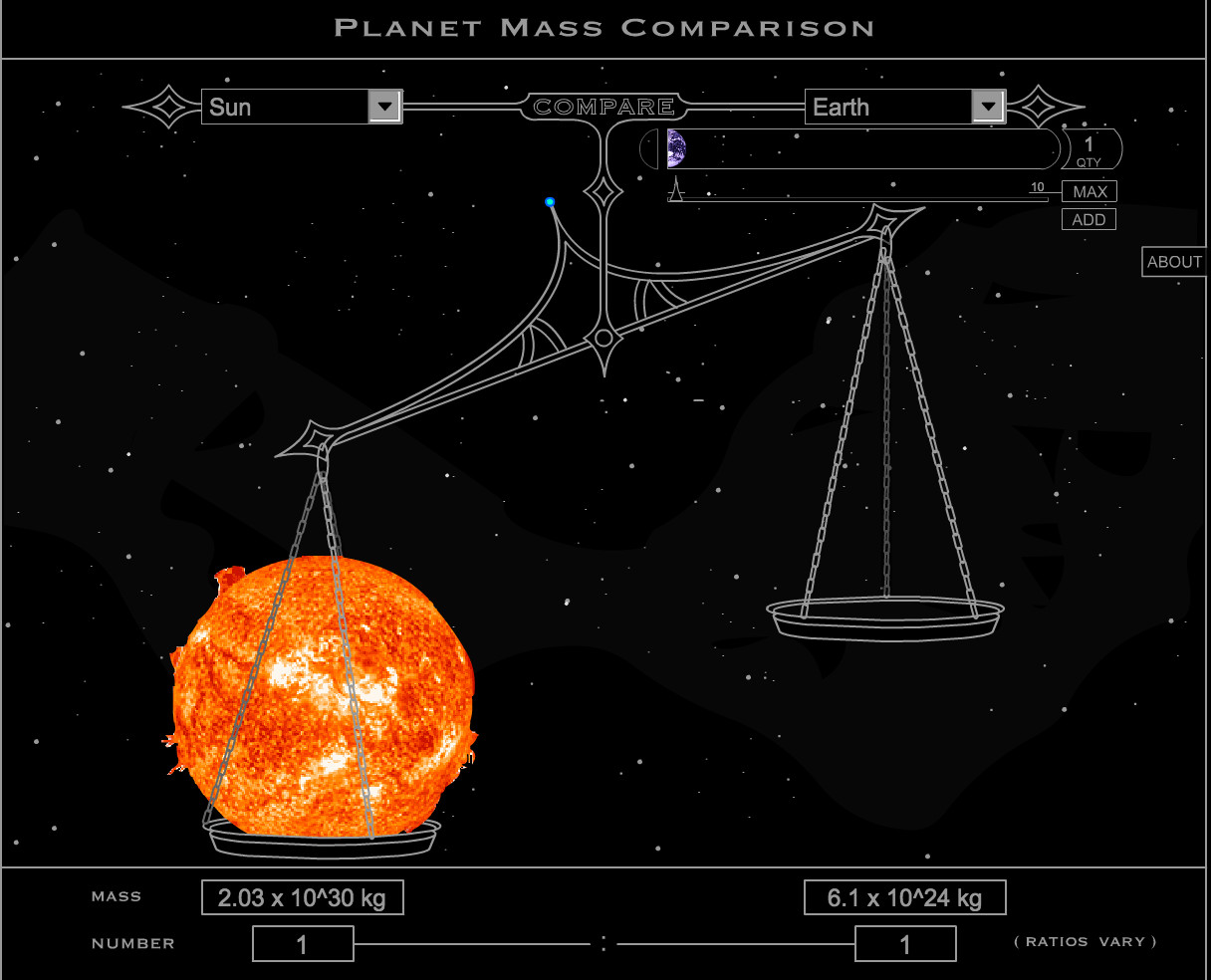
The Sun is 333 333 times more massive than the Earth. Credit: NASA
The Sun is a big ball of gas and plasma with an onion-like internal structure as is shown in the image below. The centre of the star is at a temperature of around 15 000 000 K; it is here that the thermonuclear reactions (H into He) take place.
Why is the Sun so hot?
The Sun is continuously collapsing under its own gravity (due to its mass) which creates a region of very high pressures and temperatures that initiate thermonuclear reactions.
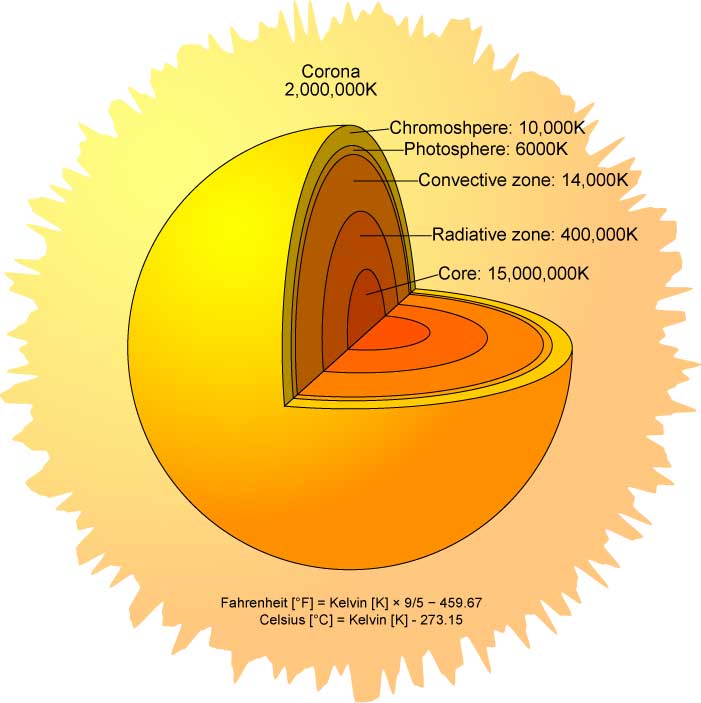
Did you know that it takes hundreds of thousands of years for the light to travel from the centre of the Sun to its surface? However, it takes only 8 minutes for the light to travel from the surface of the Sun to the Earth.
The Sun's surface can be divided into three main regions: the photosphere, the chromosphere, and the corona.
-
The photosphere is the region of the Sun that we see with our eyes. This region has a temperature of about 6000 K. It is in this region where we see sunspots which are darker because they are cooler (~1000 K lower temperature).
-
The chromosphere is a thin layer on top of the photosphere at a temperature of about 10 000 K.
-
The corona, together with the chromosphere, forms the Sun's atmosphere. This region is at a temperature of about 2 million K.
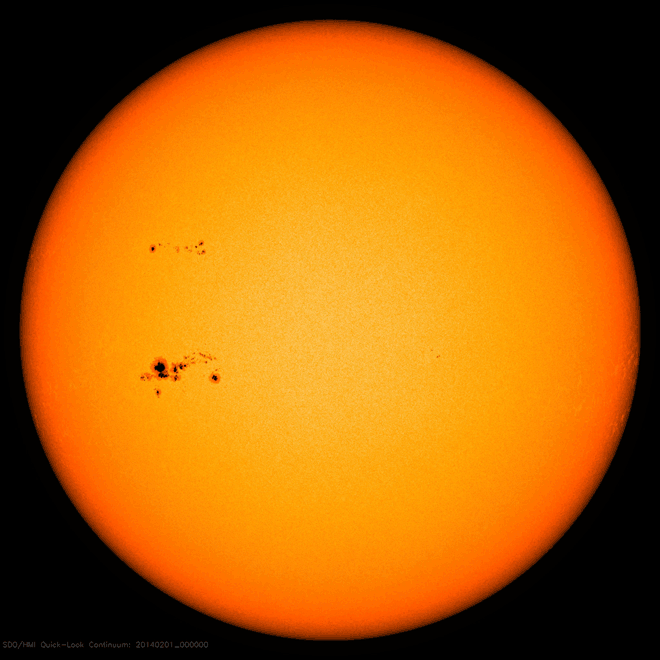
A group of sunspots (or sunpot complex, called Active Region 1967, that is 180 000 km across (larger than the Jupiter planet). A Smaller group of sunspots can also be seen rotating above. Credit: SDO/NASA.
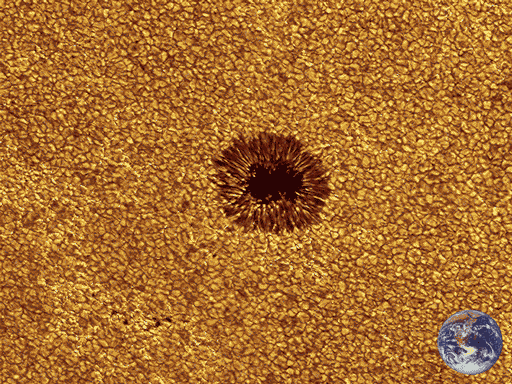
Size comparison of a sunspot to Earth ( bottom right).
By studying the movement of sunspots we can study the rotation of the Sun. Do you want to try?